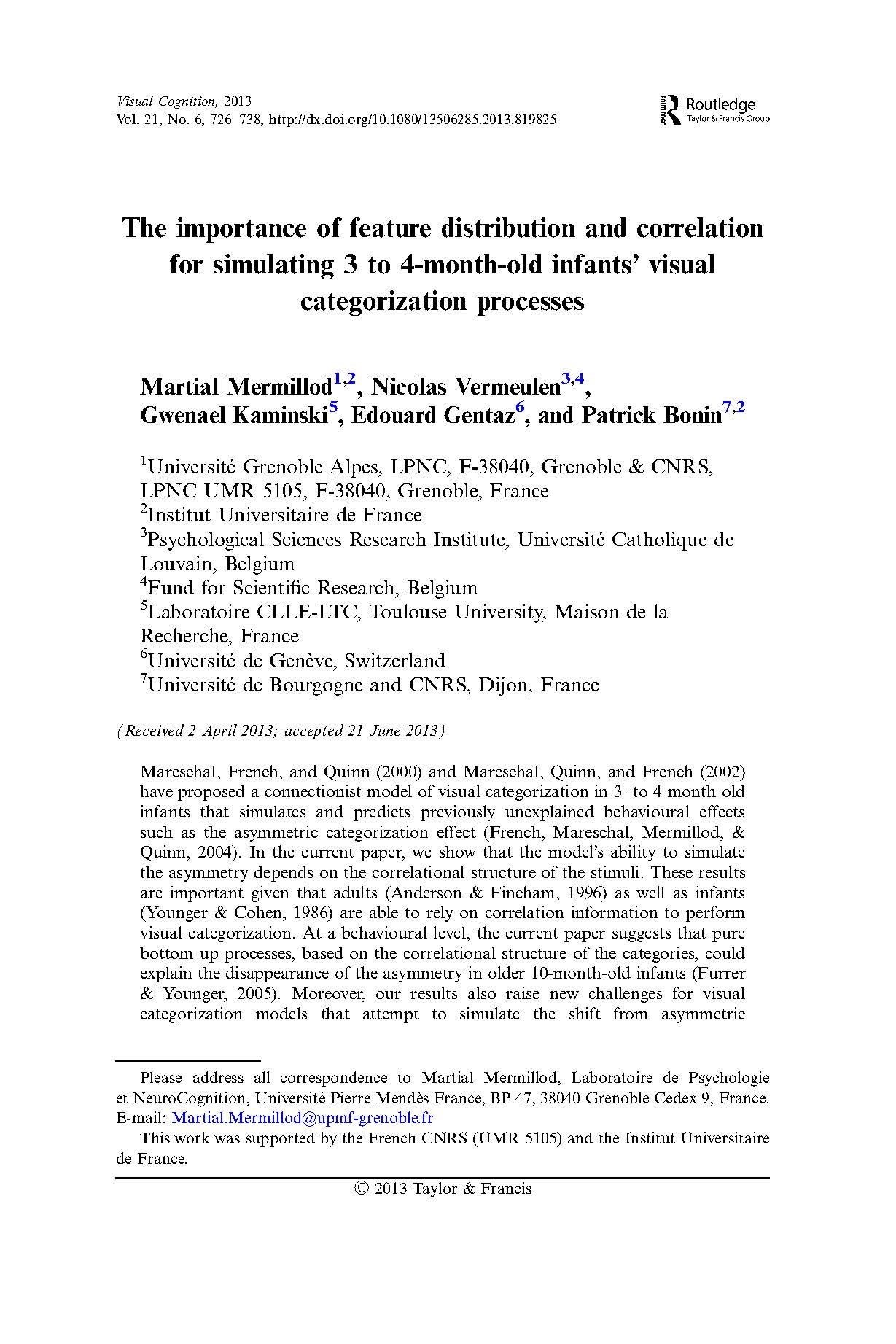Mareschal, French, and Quinn (2000) and Mareschal, Quinn, and French (2002) have proposed a connectionist model of visual categorization in 3- to 4-month-old infants that simulates and predicts previously unexplained behavioural effects such as the asymmetric categorization effect (French, Mareschal, Mermillod, & Quinn, 2004). In the current paper, we show that the model’s ability to simulate the asymmetry depends on the correlational structure of the stimuli. These results are important given that adults (Anderson & Fincham, 1996) as well as infants (Younger & Cohen, 1986) are able to rely on correlation information to perform visual categorization. At a behavioural level, the current paper suggests that pure bottom-up processes, based on the correlational structure of the categories, could explain the disappearance of the asymmetry in older 10-month-old infants (Furrer & Younger, 2005). Moreover, our results also raise new challenges for visual categorization models that attempt to simulate the shift from asymmetric categorization in 3- to 4-month-old to symmetric categorization in 10-month-old infants (Shultz & Cohen, 2004; Westermann & Mareschal, 2004, 2012).
The importance of feature distribution and correlation for simulating 3 to 4-month-old infants’ visual categorization processes
